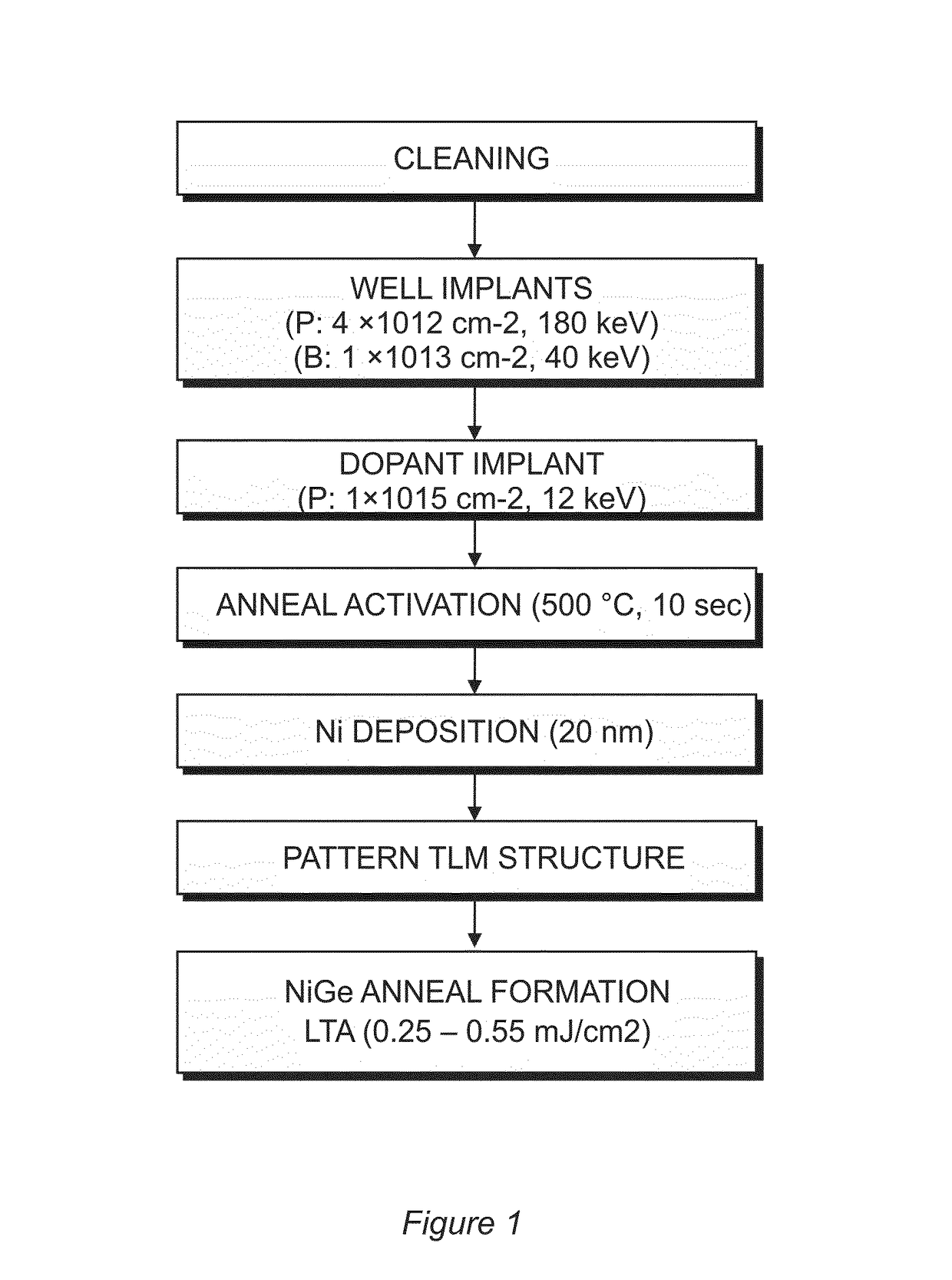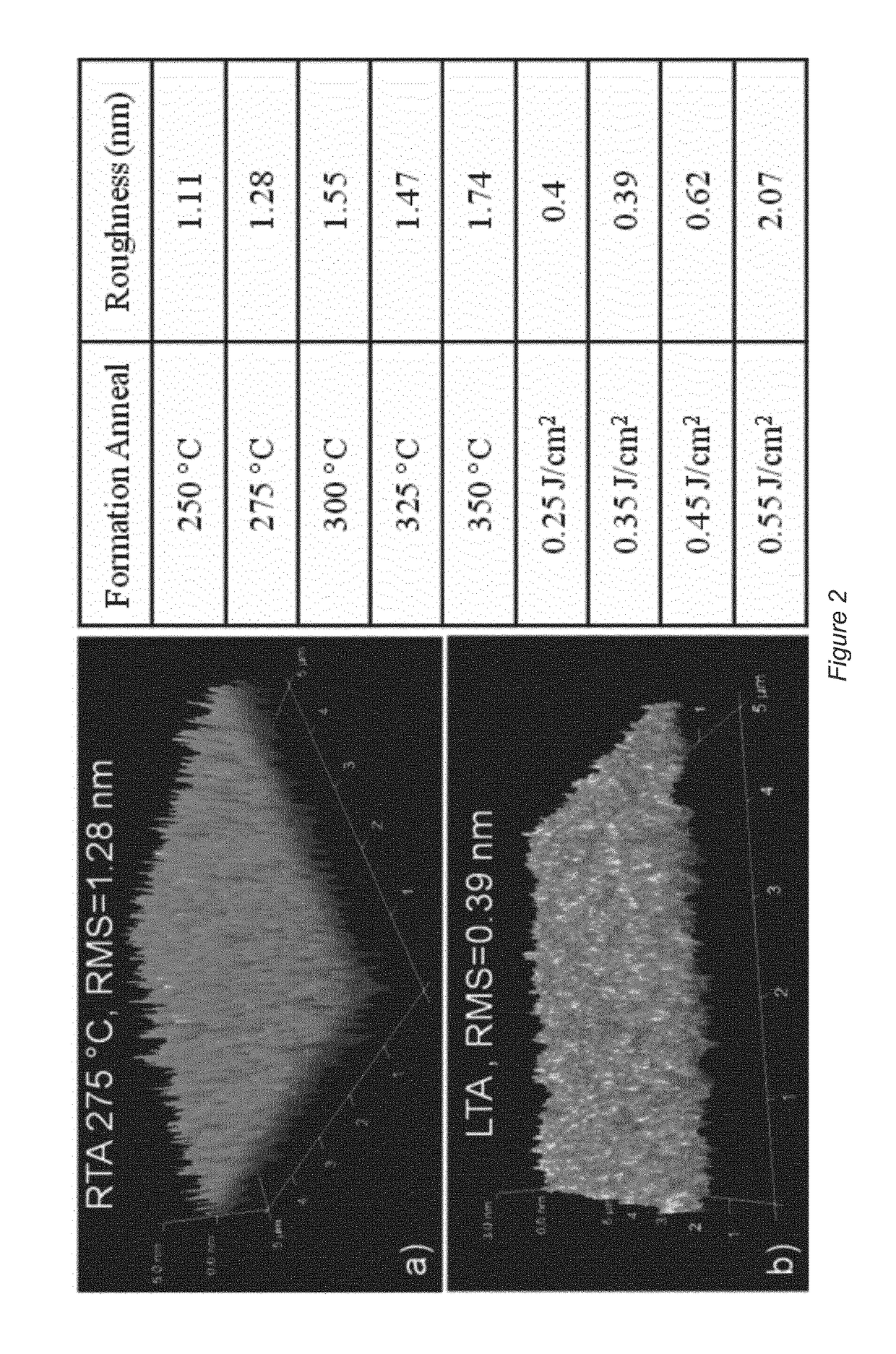Low resistance contacts for semiconductor devices
a technology of low resistance and contacts, applied in semiconductor devices, semiconductor/solid-state device details, electrical devices, etc., can solve the problems of high contact resistance to n-type ge layers, process variability can arise from rough or unintentional textured surfaces, and achieve the effect of minimizing leakage currents
- Summary
- Abstract
- Description
- Claims
- Application Information
AI Technical Summary
Benefits of technology
Problems solved by technology
Method used
Image
Examples
Embodiment Construction
[0052]There will now be described by way of example a specific mode contemplated by the inventors. In the following description numerous specific details are set forth in order to provide a thorough understanding. It will be apparent however, to one skilled in the art, that the present invention may be practiced without limitation to these specific details. In other instances, well known methods and structures have not been described in detail so as not to unnecessarily obscure the description.
[0053]Laser Thermal Annealing (LTA) is used to form Germanide contacts on n-doped Ge, which are systematically compared to results generated by conventional rapid thermal annealing (RTA). Surface topography, interface quality, crystal structure, and material stoichiometry are explored for both annealing techniques. For electrical characterization, specific contact resistivity and thermal stability are extracted. It is shown that LTA can produce a uniform contact with a remarkably smooth substr...
PUM
 Login to View More
Login to View More Abstract
Description
Claims
Application Information
 Login to View More
Login to View More - R&D
- Intellectual Property
- Life Sciences
- Materials
- Tech Scout
- Unparalleled Data Quality
- Higher Quality Content
- 60% Fewer Hallucinations
Browse by: Latest US Patents, China's latest patents, Technical Efficacy Thesaurus, Application Domain, Technology Topic, Popular Technical Reports.
© 2025 PatSnap. All rights reserved.Legal|Privacy policy|Modern Slavery Act Transparency Statement|Sitemap|About US| Contact US: help@patsnap.com



